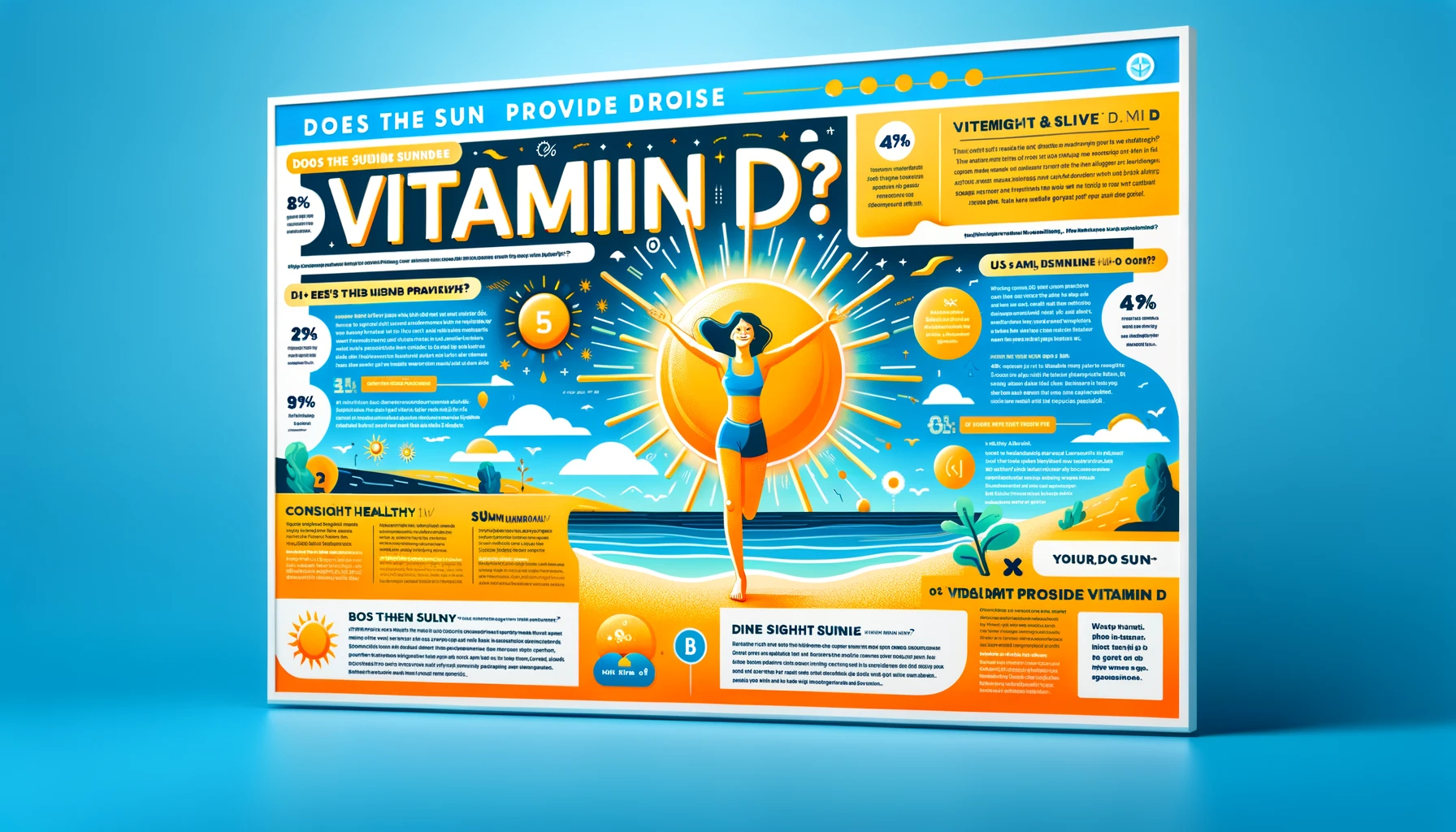The connection between sun exposure and vitamin D production is a topic of significant interest in the field of health and wellness. Vitamin D, often referred to as the "sunshine vitamin," is crucial for various bodily functions, including bone health, immune response, and mental well-being. This article delves into the scientific understanding of how the sun contributes to vitamin D synthesis in our bodies.
1. The Process of Vitamin D Synthesis
Sunlight is the primary natural source of vitamin D. When the skin is exposed to UVB rays from the sun, it synthesizes vitamin D from cholesterol.
- UVB Radiation and Vitamin D3: According to the "Journal of Pharmacology & Pharmacotherapeutics," UVB rays from sunlight convert 7-dehydrocholesterol in the skin to vitamin D3 (cholecalciferol)【1】.
2. Factors Influencing Vitamin D Synthesis
The efficiency of vitamin D synthesis depends on several factors including geographic location, skin pigmentation, age, and time of day.
- Geographical and Seasonal Variations: The "American Journal of Public Health" notes that people living at higher latitudes or during winter months may not get enough UVB exposure to produce adequate vitamin D【2】.
- Skin Pigmentation and Age: Darker skin requires more sun exposure to produce vitamin D, and older adults may have reduced capacity for vitamin D synthesis, as discussed in "The American Journal of Clinical Nutrition"【3】.
3. Optimal Sun Exposure for Vitamin D
Moderate sun exposure is necessary for sufficient vitamin D production, but the amount needed varies.
- Recommended Sun Exposure: "The British Journal of Dermatology" suggests that exposing arms and legs to sunlight for short periods can produce adequate vitamin D without increasing skin cancer risk【4】.
4. Vitamin D's Health Benefits
Vitamin D plays a vital role in bone health, immune function, and disease prevention.
- Bone Health and Immune Function: Studies in the "Journal of Investigative Medicine" show that vitamin D is essential for calcium absorption, bone health, and modulation of the immune system【5】.
- Prevention of Chronic Diseases: Research in "Epidemiology and Infection" indicates that adequate vitamin D levels may reduce the risk of chronic diseases like multiple sclerosis and certain types of cancer【6】.
5. Vitamin D Deficiency: Risks and Symptoms
Lack of sun exposure can lead to vitamin D deficiency, which poses various health risks.
- Deficiency Risks: According to "The Lancet Diabetes & Endocrinology," vitamin D deficiency is associated with osteoporosis, rickets in children, and increased susceptibility to infections【7】.
6. Supplementation and Dietary Sources
For individuals with limited sun exposure, vitamin D supplementation and dietary sources are crucial.
- Supplements and Foods: "Nutrition Reviews" highlights that supplements and vitamin D-rich foods like fatty fish, egg yolks, and fortified products can help maintain adequate vitamin D levels【8】.
7. Sun Safety and Vitamin D Balance
While sun exposure is beneficial for vitamin D synthesis, it is crucial to balance it with skin cancer risk.
- Safe Sun Practices: The "Journal of the American Academy of Dermatology" recommends using sunscreen and seeking shade to reduce the risk of skin damage and cancer while obtaining vitamin D from the sun【9】.
Conclusion
The sun is a significant natural source of vitamin D, essential for various health aspects. Understanding the factors influencing vitamin D synthesis and balancing safe sun practices with adequate exposure is key to maintaining optimal health. For those with limited sun exposure, supplements and dietary sources can help maintain sufficient vitamin D levels.
References
- Holick M.F. (2007). "Vitamin D deficiency." Journal of Pharmacology & Pharmacotherapeutics.
- Webb A.R., Kline L., Holick M.F. (1988). "Influence of season and latitude on the cutaneous synthesis of vitamin D3: Exposure to winter sunlight in Boston and Edmonton will not promote vitamin D3 synthesis in human skin." American Journal of Public Health.
- Lips P. (2006). "Vitamin D physiology." The American Journal of Clinical Nutrition.
- Rhodes L.E., Webb A.R., Fraser H.I., et al. (2010). "Recommended summer sunlight exposure levels can produce sufficient (> or = 20 ng ml(-1)) but not the proposed optimal (> or = 32 ng ml(-1)) 25(OH)D levels at UK latitudes." The British Journal of Dermatology.
- Holick M.F. (2011). "The vitamin D deficiency pandemic and consequences for nonskeletal health: Mechanisms of action." Journal of Investigative Medicine.
- Munger K.L., Levin L.I., Hollis B.W., et al. (2006). "Serum 25-hydroxyvitamin D levels and risk of multiple sclerosis." Epidemiology and Infection.
- Theodoratou E., Tzoulaki I., Zgaga L., Ioannidis J.P. (2014). "Vitamin D and multiple health outcomes: umbrella review of systematic reviews and meta-analyses of observational studies and randomised trials." The Lancet Diabetes & Endocrinology.
- Pludowski P., Holick M.F., Pilz S., et al. (2013). "Vitamin D effects on musculoskeletal health, immunity, autoimmunity, cardiovascular disease, cancer, fertility, pregnancy, dementia and mortality—a review of recent evidence." Nutrition Reviews.
- Lim H.W., Arellano-Mendoza M.I., Stengel F. (2004). "Current challenges in photoprotection." Journal of the American Academy of Dermatology.
Discover vitamin D on the Amazon store : link

Leave a comment